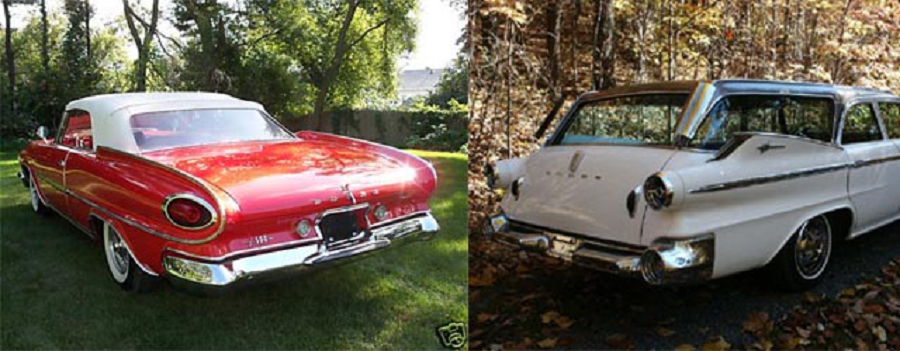
Hi Gang…
Today’s article is compliments of our friend of fiberglass – Bob Peterson. Bob is our resident Kellison sports car guru and contributor here at Forgotten Fiberglass. And his story today is all about memories, design, what could have been, and just what might have been. Intrigue, innovation, and design.
Who could ask for more!
So let’s have some fun, and share with you some great memories and fantastic pictures of the tailfins of some very special Chrysler and Dodge cars.
Take it away Bob
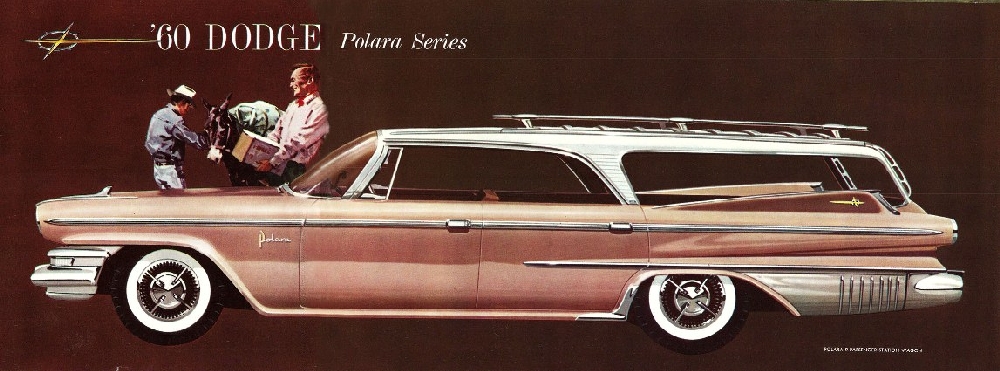
Side profile of a 1960 Dodge station wagon. The rear profile and tail fin are the same as the designs I entered in Chryslers design contest.
Chrysler Design Competition, Late 1950’s
An Article by Bob Peterson
In the 1950’s both GM and Chrysler had automotive design competitions for young designers. I had entered several over the years. Every young student most likely wanted to be a famous automobile designer. I was no different.
GM (Fisher Body) had a long-standing contest where the entrants would design a 3D model and submit it to GM. The models were typically made of wood and plaster. The rules mandated the dimension guidelines for the entrants. I never entered the GM contest, as I did not have the modeling skills required to build a serious entry. I believe that winners would receive some very substantial awards. If I remember correctly the winner would receive a scholarship to a design school.
Chrysler’s design contest of the 1950’s was different than GM’s. Chrysler would supply a large sheet of paper that had the wheel outlines drawn. The scale as I remember was about 1” = 1’ – 0”. This would give about a 15” long car profile. The student designer would then create the side profile of his or her future car.
The Chrysler contest suited my limited design skills at the time. In 1957/1958 I drew my design in pencil per the rules. It was a station wagon with fins. I made many changes over a period of several weeks. Eventually I had a profile, fin, and tail light design that I was very proud of. My Father really liked my design, even though he was a forever Ford person. Jokingly, he wanted me to put a Ford V8 emblem on the side of my entry-I didn’t do that. The entry form and design was sent in to Chrysler. Since that day, I’ve never received notification of any type from Chrysler.
I was 14 at the time.
We’ll fast-forward a few years to the fall of 1960. In the fall of each year all local dealers would have a grand unveiling of their new cars. This was an annual event for most people. A person would go downtown to see the new Chevrolet, etc. in a showroom that had the windows blocked with paper. This was so you couldn’t see the new car from the street. You had to go into the showroom to view the cars. This was always a lot of fun. Every fall my Father and I would go to all the dealers to see the new cars.
One day in the Fall of 1960 we went to the Dodge showroom. As soon as we stepped into the showroom, there was a 1960 Dodge station wagon. My Father exclaimed, “There’s your car!” I couldn’t believe it. That is the car I designed and sent to Chrysler. The fins are exactly the same. It is as if Chrysler gave my drawing to their engineers and said copy this exactly. It was just the fins and roof profile that were the same as my design. The 1960 taillights were different.
Wow, what a feeling of satisfaction and at the same time a feeling of disappointment with Chrysler for not acknowledging my entry.
Another surprise awaited my Father and I in the fall of 1961 as we viewed the new 1961 Dodge. My Father exclaimed as we walked into the showroom, “There’s your tail lights!” I couldn’t believe it. There are the taillights I designed and sent to Chrysler. I was now a high school senior with different priorities. But, still a sense of satisfaction and again the same disappointment as the previous year. Every time I see a 1960 or 1961 Dodge I have a little smile on my face and a warm spot in my heart, because I know what I did and when I did it.
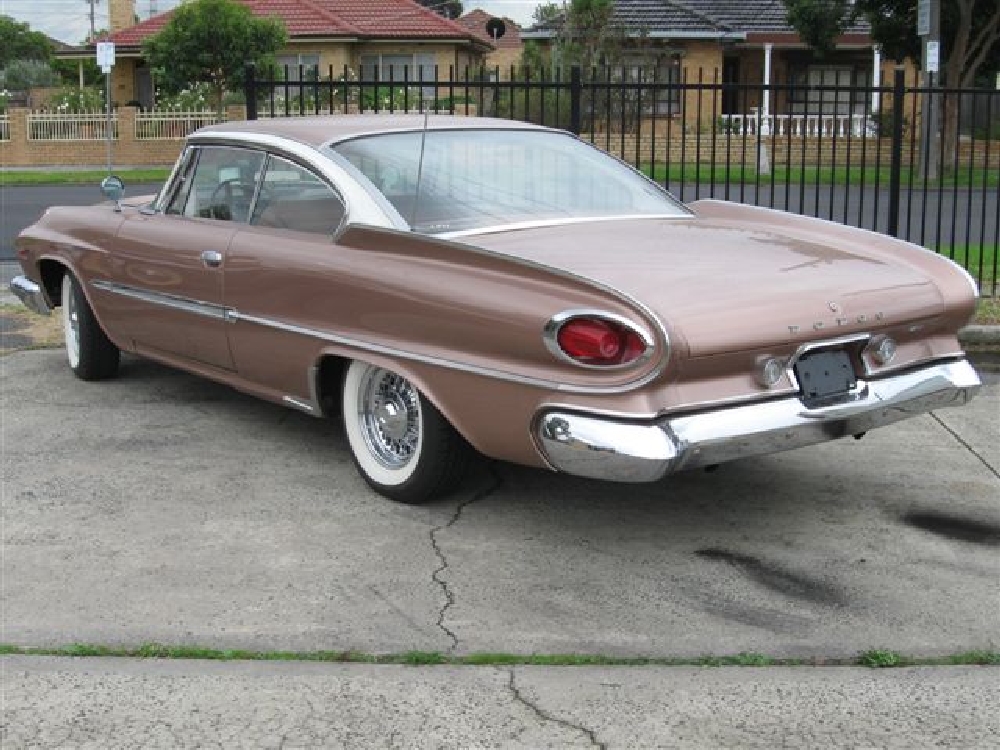
Rear ¾ view of a 1961 Dodge showing the taillights that are the same as the designs I entered in Chryslers design contest.
Reflections:
I enjoyed the design experience and challenge of designing a car. I have never said publicly or privately that Chrysler stole my designs. I just think when I see one of those cars, what is the mathematical probability of Chrysler creating the exact same fins and tail lights without my drawing?
Do I have copies of my Dodge design? No. In the 1950’s there were no copy centers to create quick cheap copies. Getting a copy/image of a drawing reproduced was expensive. My allowance wouldn’t handle it.
The 1961 Dodge has the most creative tail fins of any car ever designed. I really like the sweeping flow of them. The 1950’s and 1960’s had to be the most enjoyable for Detroit’s automotive designers. I don’t think there is any period before or after that, which has created such super designs. But, the quality and quantity of designs during the past ten years on the international scene are challenging the portfolio of great USA designs of the 1950’s and 1960’s.
If you know more details about the GM (Fisher Body) and Chrysler design competitions, let Geoff or me know in the comments section at the end of this article. I can’t remember all of the entry details at this time. GM still has a design competition, but much different from the 1950’s format. What years did each start? When did they end? Did you participate? Did you win? Did it help your career?
Automobile design, regardless at what level, is a major factor in the creation of fiberglass-bodied cars.
Bob Peterson
Cedar Rapids, Iowa
Summary:
I completely agree with Bob about the style of cars in the ’50s and ’60s – these were some of the most exciting and exhilarating (and sometimes exasperating) designs in the last 50 years.
And some great news to share gang. I’ll soon be featuring stories of – and details concerning – the Fisher Body Craftsman Guild. This was the design contest that Bob mentioned above sponsored by General Motors. Good friend George Chartier – one of the noted historians for the history of this contest and consummate collector of memorabilia too – will be lending pieces to share with all of us here concerning the Fisher Body Craftsman Guild.
Lots of new information coming your way soon here at Forgotten Fiberglass
Thanks again to Bob Peterson for sharing his memories, designs, and a bit of intrigue with us today. Its stories like these that make our website an enjoyable place for all to visit.
Great job Bob!
Hope you enjoyed the story, and until next time…
Glass on gang…
Geoff
——————————————————————-
Click on the Images Below to View Larger Pictures
——————————————————————-
- Great Looking ’61 With Completely New Style For Taillights.

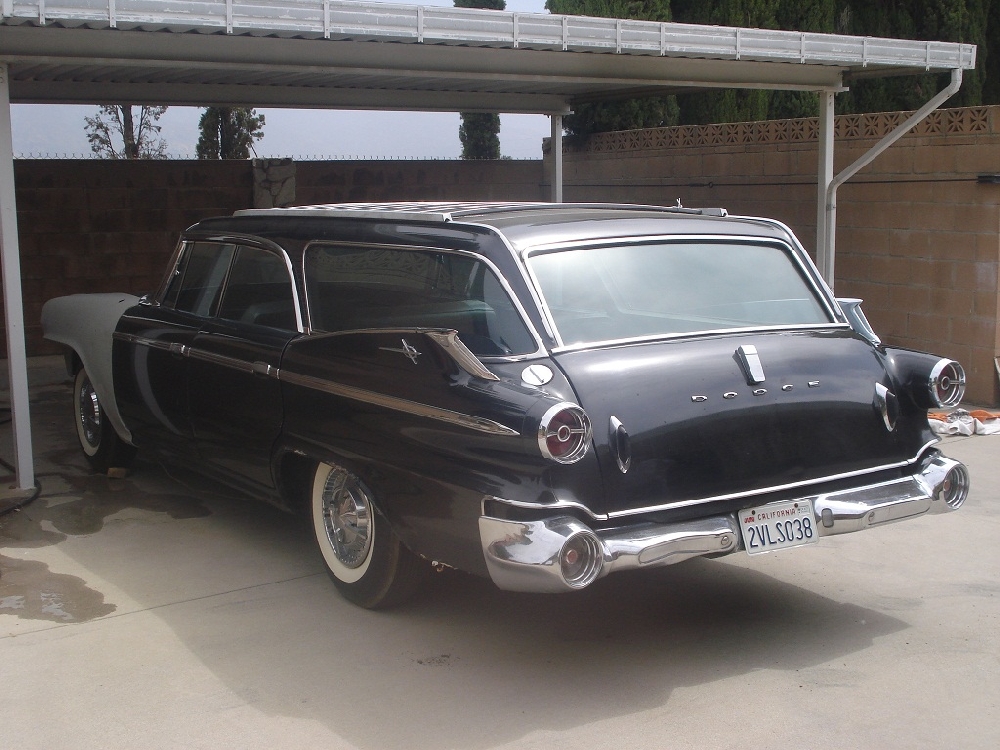
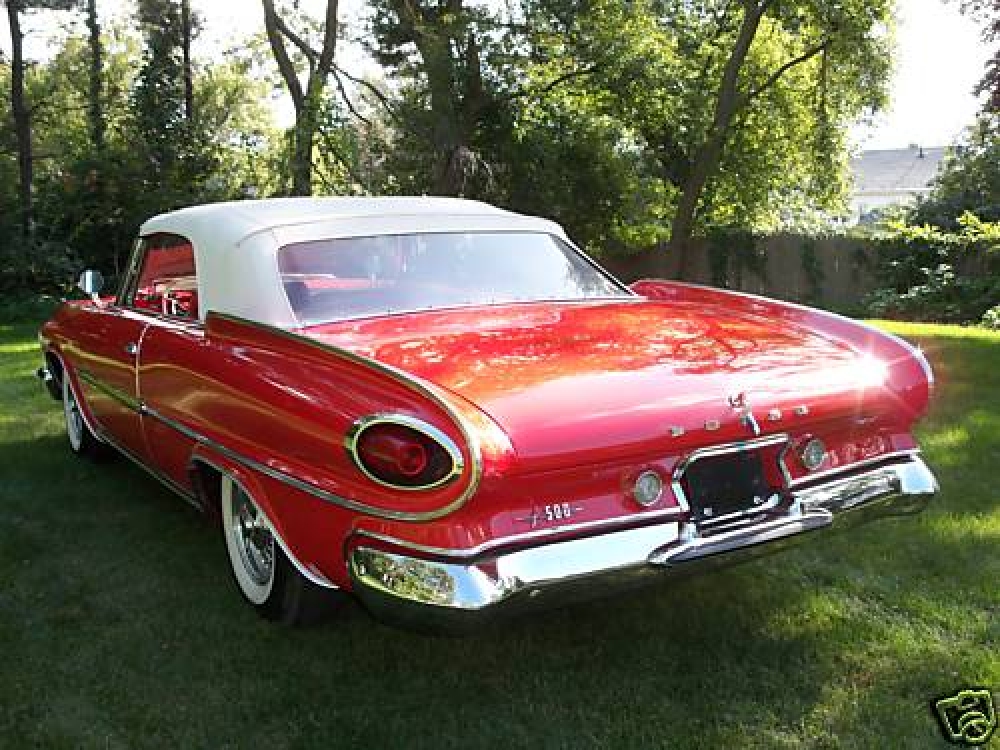

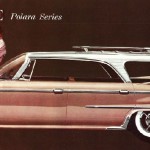
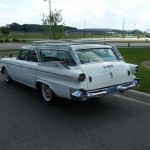
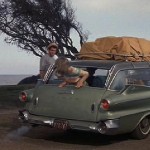
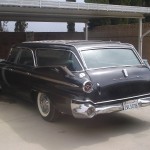
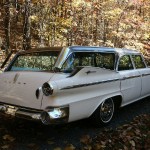
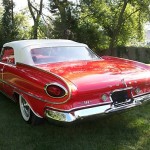
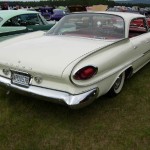
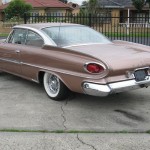
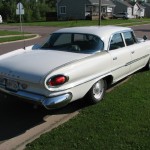
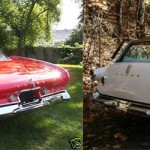
I too entered the Chrysler – Fisher auto body contests a few years in the mid 50’s. Got letters back telling me I was disqualified on gender – the contest was only open to boys.
Imagine how many stylists WORKING for car companies that got no recognition for their ground breaking ideas but their superiors did.
As a designer, I get to speak to groups of car people on occasion. I am never upset or bothered by someones comment, “oh that looks like a feature used on a Camaro or an Opel” or what ever it is they might see. Was that what I was thinking about when I did the design? Well not that I remember but if I look at it from their perspective I can see it to some small degree.
One of the things I do remind people is there are really no shapes that have not been used before, but there are an infinite number of different ways of using and combining those shapes.
I also have other friends that I know full well came up with ideas that they talked about, that some years later made it to production. Coincidence? Well perhaps.
Have I seen my styling cues in other production cars that came out after my designs? Most definitely, and like Bob, I am always delighted that someone else thought it was a good idea too, and of course also like Bob, a little sad, that I was not the one getting credited for the idea. Funny part is and I do not want to put words in Bob’s mouth, it really is not about money either, just in some cases the satisfaction of knowing you were involved in some way.
Well Bob, I understand completely both your elation and disappointment, but you have to feel a bit of satisfaction knowing that a design you did when you were a teen, did make it into a 3 dimensional production automobile. Kudo’s… That is pretty darn neat in any ones book. And those finned Chrysler products were and still are the stuff of dreams, I for one am glad they had the courage to produce them, it was a magic time in automotive design.
Absolutely, it is not about the money. I’m an artist. It’s the satisfaction brought about by the creative process that’s most important. Money is nice but, inner satisfaction is always and forever.
In the early ‘50s I entered a model in the Fisher Body Craftsman’s Guild design competition. It was a station wagon with a raised section in the rear with a windshield so the people in the rear seat would have a view forward. I never heard back from the competition. In 1964 Oldsmobile came out with the Vista Cruiser. I guess my design was too far ahead of it’s time.
Thanks for the comments Ted and Marshall. Geoff has another design story of mine that has a very positive design outcome.
I always liked that 1961 rear profile. A friend that salvages old cars was shipping out a rear fender section and I had a chance to look it over. It has been an element that remains in my memories to this day. When I was younger learning about what a computer could do (TRS-80), I came up with an idea inspired by bats. Why not install an ultrasonic emitter of some sort and a receiver in the front of a car in line with the wheels that would pick up variations in the road. The “computer” could calculate an appropriate adjustment to some sort of variable suspension and give you a smoother ride. Most people I told this about thought it pie-in-the-sky kind of thinking. There are systems out there like this now in some fashion or another. I mention this for a reason. Something like this is a logical progression in mechanical design. Pure creative design progressing to meet up with the exact design of another is, as mentioned above, unlikely. Remember the old adage; “why buy the cow when you can get the milk for free”. This can happen by just sharing a design and by companies you might work for. Remember as well, it is the creative designer that drives the aesthetics of the things we use every day. Without them what would the manufacturers produce? Thanks for “The Rest of the Story” for a design element that has stuck with me for years.
Marshall
What an amazing but rather sad story Bob. It’s been happening forever. I can remember an Australian sending his drawings of a proposed sports car to Rootes, heard nothing back, then the Alpine arrived so similar to his original ideas.